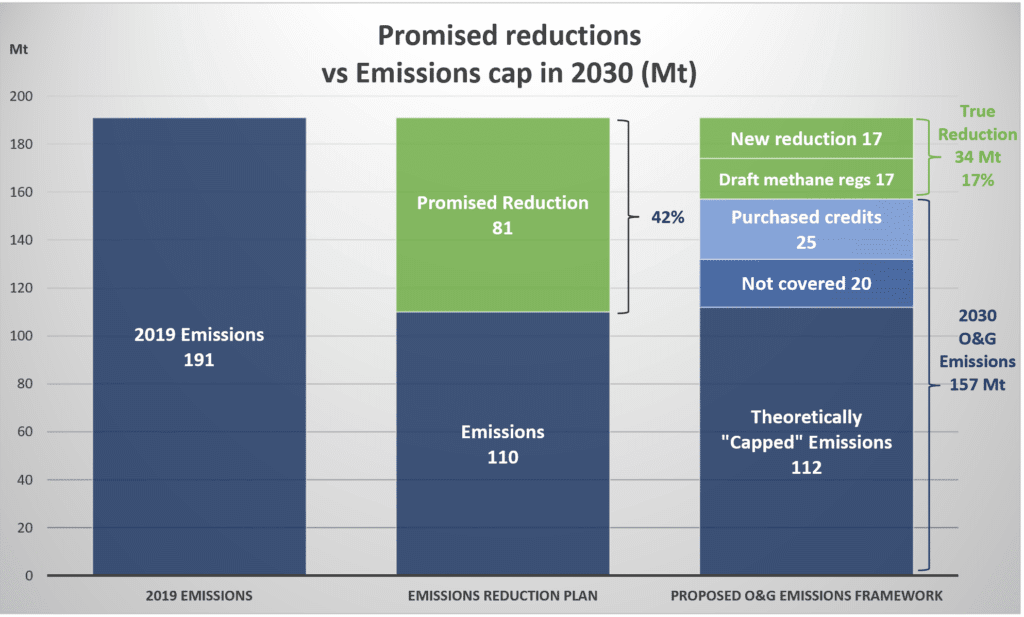2024 Oil & Gas Emissions Cap

Tell the Feds to Strengthen the Cap On Oil & Gas Emissions!
The federal government recently published a Regulatory Framework to Cap Oil and Gas Sector Emissions. Comments on the Framework are being accepted until Feb 5. Email the feds to tell them what you think!
How it Works
- On Jan 1, 2026, oil and gas (O&G) companies will have to start reporting their emissions
- O&G companies will be given free “allowances” to emit greenhouse gasses (GHGs)
- The sector’s total allowances (the cap) will be 112 Mt in 2030 and will decrease until 2050
- Companies will be allowed to buy credits to emit an additional 25 Mt, for a total of 137 Mt in 2030
- New facilities would not have to comply for two years
Problems With the Framework
#1 – The cap level is far too lenient and the scope of application is too narrow

- In the 2022 Emissions Reduction Plan, the feds promised to lower oil and gas sector emissions by 42% by 2030
- The proposed cap only lowers oil and gas sector emissions by 17% by 2030. This is a serious failure!
- 20 Mt of emissions from oil refineries and gas pipelines have been omitted from the cap
#2 – Companies can “pay to pollute” an additional 25 Mt over and above the cap
- Companies will be able to buy credits to emit up to 20% more than their allowance
- Companies can buy domestic or international offsets, the vast majority of which have been proven not to produce any emissions reductions
- Even worse, companies can get credit for paying into a “decarbonization” fund that is funneled back to the O&G industry. This “double dipping” is absurd, inciting the industry to maximize production. Decarbonization funds should go to renewable energy projects instead.
#3 – Oil and gas production, especially LNG, will INCREASE under the cap between now and 2030
- The production of fossil fuels is the Constitutional jurisdiction of each province, but the federal government should be less timid about using its shared jurisdiction of reducing GHG emissions
What You Can Do
- Read the Proposed Regulatory Framework on the Government of Canada website
- Send written comments by email to PlanPetrolieretGazier-OilandGasPlan@ec.gc.ca by Feb 5
- Tell the feds they must deliver 42% emission reductions from the O&G sector in 2030 as promised
- Tell the feds O&G companies should not be allowed to pay to pollute more than the cap
For more information, and to make your submission more impactful, continue to our full toolkit.